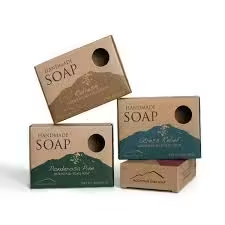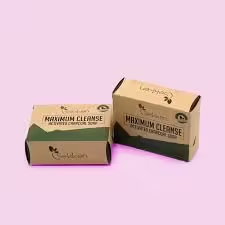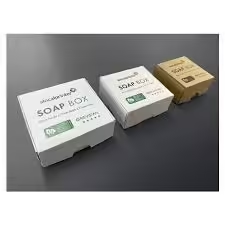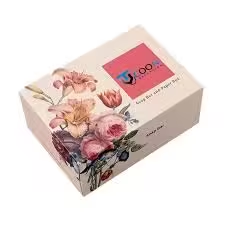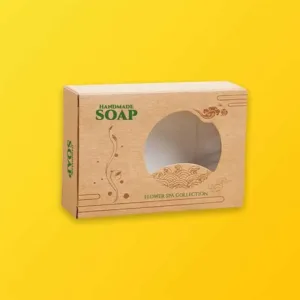Eco Friendly Soap Boxes
Eco-friendly soap boxes provide a sustainable packaging solution that aligns with environmental values. Made from recyclable or biodegradable materials, these boxes offer sturdy protection while minimizing ecological impact. They feature customizable designs that showcase your brand’s commitment to sustainability and help attract eco-conscious consumers. Ideal for both retail and gifting, eco-friendly soap boxes combine functionality with a dedication to reducing environmental footprint.
Introduction
In a world increasingly focused on environmental sustainability, eco-friendly soap boxes have emerged as a key component in the packaging industry’s efforts to reduce its ecological footprint. These boxes not only serve as functional and attractive packaging solutions but also reflect a commitment to environmental responsibility. This comprehensive guide explores the features, benefits, and considerations of eco-friendly soap boxes, highlighting how they contribute to a greener future while enhancing your brand’s image.
The Concept of Eco-Friendly Soap Boxes
Eco-friendly soap boxes are designed with sustainability at their core. Made from materials that are either recyclable, biodegradable, or sustainably sourced, these boxes aim to reduce the environmental impact associated with traditional packaging options. By choosing eco-friendly soap boxes, brands can contribute to the reduction of waste and pollution while appealing to a growing segment of environmentally conscious consumers.
Key Features of Eco-Friendly Soap Boxes
- Sustainable Materials: Eco-friendly soap boxes are crafted from materials such as recycled paper, cardboard, bamboo, or plant-based fibers. These materials are chosen for their lower environmental impact compared to conventional packaging materials. For example, recycled paper uses fewer resources and generates less waste, while bamboo and plant-based fibers are renewable and biodegradable.
- Recyclability and Biodegradability: A major advantage of eco-friendly soap boxes is their ability to be recycled or biodegraded. Recyclable boxes can be processed and reused in the production of new packaging or other paper products, reducing the demand for virgin materials. Biodegradable options break down naturally over time, minimizing long-term environmental impact and contributing to waste reduction.
- Customizable Design: Eco-friendly soap boxes do not compromise on design. Brands can customize these boxes with various prints, colors, and finishes to reflect their unique identity. Customization options include digital and offset printing, as well as the use of soy-based or vegetable inks that are less harmful to the environment compared to traditional inks.
- Durability and Protection: Despite their eco-friendly nature, these soap boxes are designed to be durable and protective. They offer robust protection for the soap, shielding it from dust, moisture, and physical damage. The use of high-quality, sustainable materials ensures that the boxes maintain their strength and functionality while aligning with environmental goals.
- Elegant Aesthetics: Eco-friendly soap boxes can be as visually appealing as they are sustainable. With options for sleek, minimalist designs or elaborate patterns, these boxes enhance the presentation of the soap and contribute to a premium product experience. The aesthetic appeal helps attract consumers and reinforces the brand’s commitment to quality and sustainability.
- Consumer Appeal: The growing consumer preference for environmentally responsible products makes eco-friendly soap boxes an attractive choice. By using sustainable packaging, brands can differentiate themselves in the market and appeal to eco-conscious consumers who prioritize environmental impact in their purchasing decisions.
Benefits of Eco-Friendly Soap Boxes
- Environmental Impact: The primary benefit of eco-friendly soap boxes is their reduced environmental impact. By using materials that are recyclable or biodegradable, these boxes help decrease waste and pollution, contributing to a cleaner and healthier planet. This aligns with global efforts to promote sustainability and reduce the consumption of non-renewable resources.
- Brand Differentiation: Eco-friendly packaging can significantly enhance a brand’s image. Consumers are increasingly drawn to brands that demonstrate a commitment to environmental responsibility. By choosing eco-friendly soap boxes, brands can differentiate themselves from competitors, build a positive reputation, and foster consumer loyalty.
- Regulatory Compliance: As environmental regulations become more stringent, adopting eco-friendly packaging solutions can help brands stay ahead of compliance requirements. Using sustainable materials and practices demonstrates a proactive approach to environmental stewardship and can mitigate potential regulatory risks associated with packaging.
- Cost Efficiency: While eco-friendly soap boxes can sometimes be more expensive upfront, they can lead to long-term cost savings. Recycled materials often cost less than virgin materials, and the durability of eco-friendly boxes can reduce damage-related losses. Additionally, consumer demand for sustainable products can drive increased sales and market share.
- Consumer Education: Eco-friendly soap boxes provide an opportunity to educate consumers about sustainability. By incorporating information about the box’s environmental benefits and how to properly recycle or dispose of it, brands can raise awareness and encourage responsible consumer behavior.
- Versatility: Eco-friendly soap boxes are versatile and can be adapted to various soap sizes and types. Whether you have artisanal soaps, luxury bars, or standard varieties, these boxes can be customized to fit different dimensions and shapes, providing a practical and sustainable packaging solution for a wide range of products.
Considerations When Choosing Eco-Friendly Soap Boxes
- Material Selection: Choose materials based on their environmental impact, durability, and compatibility with your brand’s values. Recycled paper and cardboard are popular choices, but other options such as bamboo or plant-based fibers may offer additional benefits. Ensure that the chosen material meets both functional and sustainability criteria.
- Design and Printing: Invest in high-quality design and printing services to create an attractive and effective packaging solution. Collaborate with designers who understand eco-friendly practices and can incorporate sustainable printing techniques, such as using vegetable-based inks and minimizing ink usage.
- Size and Fit: Ensure that eco-friendly soap boxes are accurately sized to fit your soap products. Proper fit is crucial for both functionality and appearance. Custom-sized boxes should be designed to accommodate various soap dimensions and shapes, providing a snug and professional wrap.
- Cost and Budget: Evaluate the cost of eco-friendly soap boxes in relation to your budget. While sustainable packaging options may have a higher initial cost, consider the long-term benefits and potential for increased consumer appeal. Look for packaging solutions that offer a balance between quality, sustainability, and cost.
- Consumer Education: Include information on the packaging about how to properly recycle or dispose of the soap box. This can help educate consumers on the environmental benefits of the packaging and encourage them to make responsible choices.
Conclusion
Eco-friendly soap boxes represent a significant step towards more sustainable packaging practices. By using recyclable, biodegradable, or sustainably sourced materials, these boxes offer a practical and attractive solution that aligns with environmental values. With customizable designs, robust protection, and enhanced consumer appeal, eco-friendly soap boxes provide both functional and aesthetic benefits. As consumers and regulations increasingly prioritize sustainability, adopting eco-friendly packaging can position your brand as a leader in responsible practices and contribute to a greener future. Investing in high-quality, sustainable soap boxes not only enhances your product presentation but also demonstrates a commitment to environmental stewardship that resonates with today’s eco-conscious consumers.
Frequently Asked Question
-
What materials are commonly used for eco-friendly soap boxes?
Eco-friendly soap boxes are made from materials that are either recyclable, biodegradable, or sustainably sourced. Common materials include recycled paper, cardboard, bamboo, and plant-based fibers. These materials are chosen for their lower environmental impact compared to conventional packaging, contributing to reduced waste and pollution while supporting sustainability.
-
How can I customize the design of eco-friendly soap boxes?
Eco-friendly soap boxes can be customized with a variety of design elements. You can incorporate your brand’s logo, colors, and product information using printing techniques such as digital printing, offset printing, and foil stamping. Customization options also include choosing finishes like matte or gloss, and using soy-based or vegetable inks to align with eco-friendly practices.
-
Are eco-friendly soap boxes as durable as traditional packaging?
Yes, eco-friendly soap boxes are designed to be durable and protective, just like traditional packaging. They offer robust protection for the soap, shielding it from dust, moisture, and physical damage. The use of high-quality, sustainable materials ensures that the boxes maintain their strength and functionality while aligning with environmental goals.

